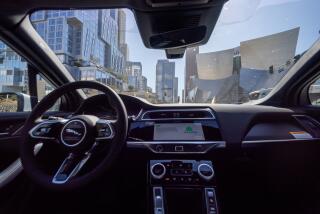Itâs the end of the road for Sidecar
Run over by competitors like Uber and Lyft, startup Sidecar will cease its ride-hailing and delivery operations at 2 p.m. Thursday, the company announced.
The nearly 4-year-old San Francisco company, which raised $35 million in financing during its lifetime, has left the door open for using any remaining funds to jump-start an alternative business.
âToday is a turning point for Sidecar as we prepare to end our ride and delivery service so we can work on strategic alternatives and lay the groundwork for the next big thing,â Chief Executive Sunil Paul said in a blog post.
Founded in 2012, Sidecar helped usher in the age of using smartphones to hail rides from strangers, but it never rallied the same level of consumer enthusiasm â or bankroll â as rivals Uber and Lyft. Uber has a valuation of $62.5 billion, and Lyft is valued at $2.5 billion.
And although Uber and Lyft operate in hundreds of U.S. cities and have expanded internationally through new businesses and partnerships, Sidecar was available in only 10 U.S. cities, including Los Angeles, Long Beach, San Diego and San Francisco.
Sidecar expanded its mission this year, deploying its fleet of on-demand drivers to also make same-day deliveries of food, groceries and packages on behalf of partner companies such as Eat24 and Peach.
The shift was touted by backers as reducing the cost associated with âlast-mile logistics,â or the typically expensive process of moving goods to consumers in the final link of the distribution chain.
In February, Avalon Ventures partner Rich Levandov, a Sidecar investor, wrote that delivery-as-a-service would alter the online retail landscape for good. âAllowing e-commerce customers to outsource the cost (and often harrowing logistics) of delivery liberates them to focus on their primary business,â he said.
The logic has merit, particularly as major retailers and a growing number of on-demand app developers find themselves in stiff competition to meet the give-it-to-me-now desires of mobile consumers.
On Monday, Amazon touted the success of its one-hour and two-hour delivery service, Amazon Prime Now, during the holiday shopping season. Available in more than 20 metropolitan areas, Prime Now had its busiest day ever on Christmas Eve, the e-commerce giant said.
âMy sense is that [Sidecarâs failure] doesnât really indict the business model of having a separate courier for last-mile deliveries to compete with Amazon,â said Yoram Wurmser, a retail and e-commerce analyst for EMarketer. âThere is still a future for that model, but it might need to take someone like an Uber that has the scale and efficiency to make it work.â
Perhaps, then, Uber also ran over Sidecarâs delivery ambitions. In October, the ride-hailing leader launched a service called UberRushâ in Chicago, New York and San Francisco to handle speedy deliveries from companies to local businesses.
âItâs an obvious place for [Uber] to go,â Wurmser said. âThey have the infrastructure there for the provider and the consumer. It doesnât take a lot to shift to a courier service.â
Paul did not specify the reason Sidecar was quitting the ride-hailing business, and said although âthis is the end of the road for the Sidecar ride and delivery service ⦠itâs by no means the end of the journey for the company.â
It is unclear how many Sidecar drivers will be affected and what this means for the companyâs employees.
ALSO
Looks like Google Glass is back
New Facebook service ignites battle over net neutrality in India
Chinese auto start-ups are poised to disrupt the electric car market







